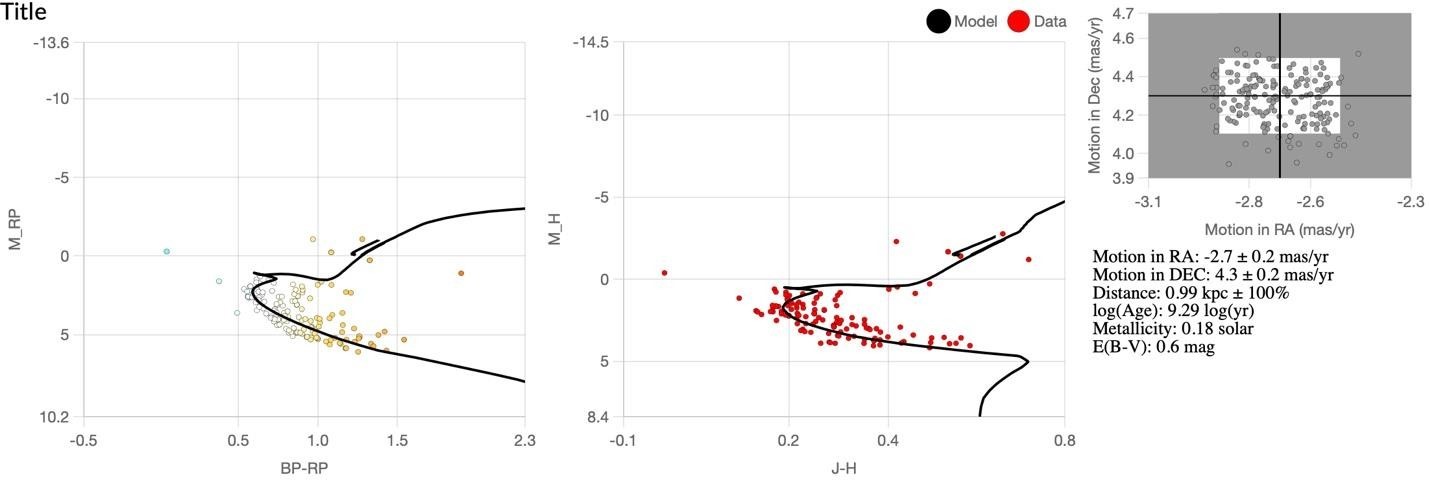NGC 2112 is a remarkable intermediate star cluster located in the northern constellation of Orion. Discovered by the prolific astronomer William Herschel in 1784, it has been a subject of scientific interest for over two centuries.
As an avid astro-photographer and amateur astronomer, I was thrilled to have the opportunity to study this stunning cluster and explore its properties. To do so, I utilized the Skynet PROMPT telescope network to collect deep images of NGC 2112 in B, V, R and I filters, with exposure durations of 115s, 45s, 25s and 25s respectively. I then used Afterglow and Cluster Pro Plus software to process the data and created a detailed color image of the cluster.


The HR diagram of the cluster, shown below, was constructed using Gaia DR2 data and isochrone models. My analysis revealed that the distance to NGC 2112 is 990 parsecs with a maximum error of 50 parsecs. The cluster has a proper motion of -2.7 ± 0.2 mas/year in right ascension and 4.3 ± 0.2 mas/year in declination. The color excess E(V-B) of the cluster is 0.6, and its metallicity is 0.18 dex. The logarithm of the cluster age (in years) is 9.29. The isochrone that best fit the data had an age of 630 million years, a metallicity of 0.18, and a distance of 990 parsecs.

One of the most interesting aspects I found through this analysis was the presence of blue stragglers within the cluster. These are stars that appear to be much younger than the rest of the population, suggesting that they may have formed through mergers or other unusual processes. Additionally, my images revealed a faint nebulosity around the cluster, which could be indicative of ongoing star formation within NGC 2112.
In a recent study, Kharchenko et al. (2013) used Gaia data to estimate the fundamental parameters of NGC 2112, including its age and distance. Comparing their results with mine, I found that there was a high degree of agreement between the two analyses, with only minor discrepancies.
Overall, studying NGC 2112 was an incredibly fulfilling experience for me. It allowed me to deepen my understanding of star clusters and the processes that govern their evolution. I look forward to future opportunities to explore the wonders of the universe and continue to expand my knowledge of astronomy.
Sources:
- NGC 2112 on in-the-sky.org (https://in-the-sky.org/data/object.php?id=NGC2112)
- NGC 2112 on SIMBAD (http://simbad.u-strasbg.fr/simbad/sim-id?Ident=NGC+2112)
- Kharchenko, N. V., Piskunov, A. E., Schilbach, E., Röser, S., & Scholz, R.-D. (2013). Global survey of star clusters in the Milky Way. Astronomy & Astrophysics, 558, A53. https://doi.org/10.1051/0004-6361/201322302